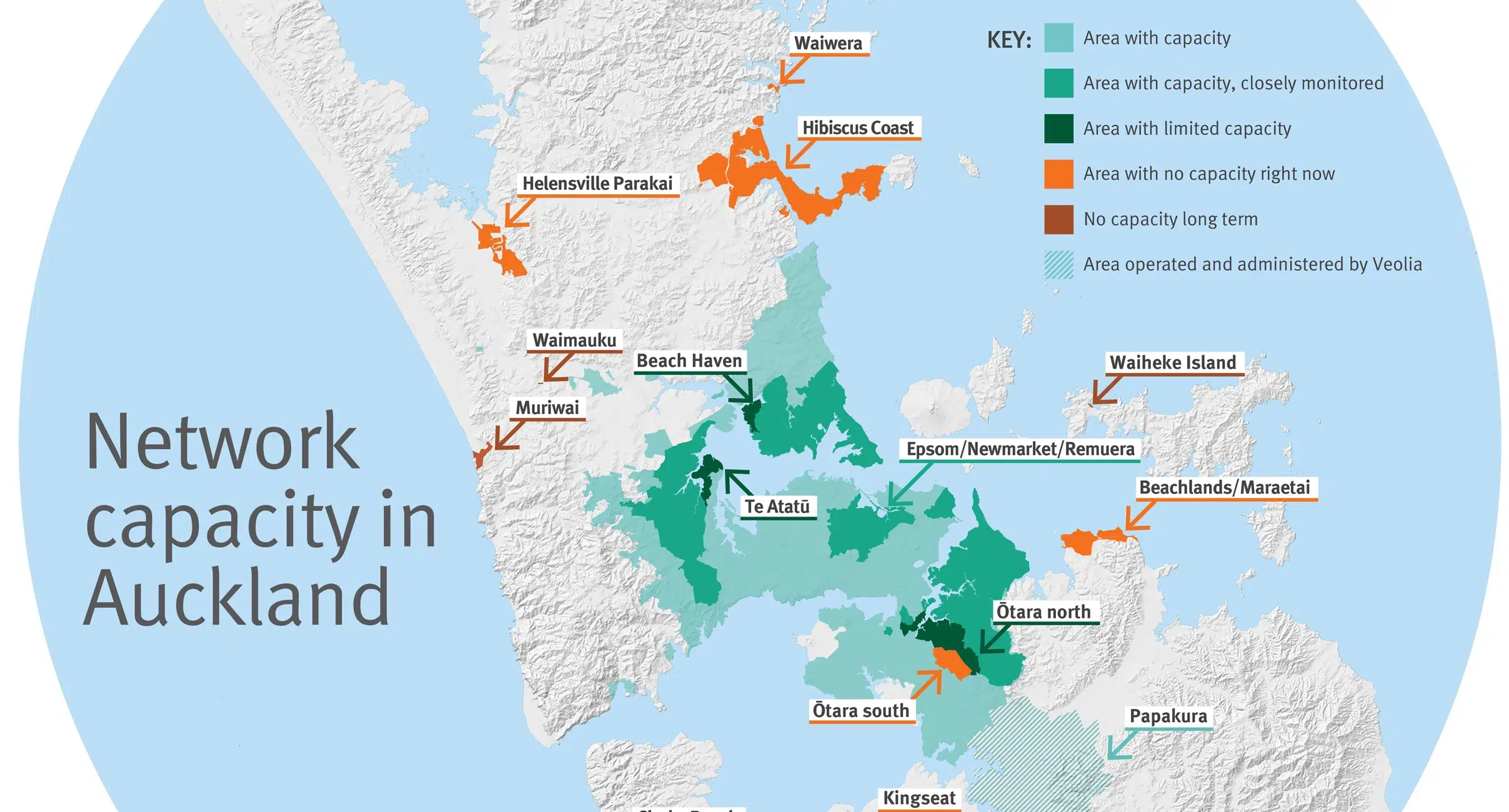Auckland’s rapid growth is reshaping its urban landscape, but with expansion comes infrastructure challenges—particularly in water and wastewater services. Watercare, the city’s primary water utility, has identified capacity constraints in certain areas, impacting development timelines and planning.
Read Watercare’s announcement: Building for Auckland’s growing water needs.
Understanding the Constraints
In June 2025, Watercare released an updated network capacity map highlighting regions with sufficient infrastructure and those facing limitations. While many areas can support new developments, some suburbs and towns are experiencing bottlenecks in water and wastewater networks. These constraints are not uniform; they can vary from entire suburbs to specific streets, depending on local infrastructure conditions.
See the 2025 Watercare Network Capacity Map for details.
Implications for Developers
For developers, these constraints mean that obtaining connections to water and wastewater services may be subject to additional scrutiny or delays. In areas with limited capacity, Watercare assesses applications individually, considering factors like the development’s location, size, and projected demand. In some cases, developers may need to invest in infrastructure upgrades or wait for planned enhancements to the network.
Navigating the Development Process
Given the complexities, early engagement with Watercare and thorough planning are crucial. Developers should:
- Early Consultation: Engage with Watercare during the initial planning stages to understand potential constraints. By contacting them early at [email protected] you can discuss options and potential solutions for your project.
- Review the Capacity Map: Utilise Watercare’s network capacity map to identify areas with limitations. You can see the Auckland network capacity map at the Watercare website.
- Plan for Potential Upgrades: Be prepared for possible infrastructure contributions or delays in areas with known constraints.
Planned Infrastructure Upgrades
To address these challenges, Watercare is investing significantly in infrastructure projects. These projects aim to enhance capacity and support future growth, but timelines vary, and developers should plan accordingly.
A Few Additional Points to Remember:
- While the map provides a great starting point, it focuses on capacity at a town or suburb level. There may still be limitations on specific roads within highlighted areas. We recommend referencing Watercare’s GIS maps for a more granular view.
- Watercare emphasises open communication. Even if an area shows limited capacity, it doesn’t necessarily mean “no go.” They assess applications on a case-by-case basis. Consider contacting Watercare early to discuss your project’s feasibility.
This is a positive step towards transparency and collaboration between developers and Watercare. With this new resource and open communication, you can make informed decisions and navigate the development process more efficiently.
We recommend consulting with a professional planner early in the development process. They can provide valuable insights into potential constraints, zoning requirements, and development opportunities specific to your site. By working closely with a planner, you can make informed decisions, identify potential risks, and optimise your development strategy
Understanding and adapting to Watercare’s network constraints is essential for successful development in Auckland. With informed planning and expert guidance, developers can navigate these challenges effectively.
For more detailed information on specific areas and the latest updates, refer to Watercare’s Network Capacity Map.
We offer a wide range of surveying services at a reasonable cost; whether you’re planning an extension for your house or obtaining Unit Titles for your completed commercial building, you almost always need the expertise of a surveyor.


